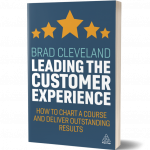There’s a scene in the movie Jobs, the biographical drama of Steve Jobs’ life, where he is shown fiddling with a portable CD player. It’s clumsy, heavy, and he struggles to get the CD loaded. The next scene shows him throwing the device into the trash. Of course, the rest of the story—the birth of the iPod, digital music, and how those features would find their way into the iPhone—is now history. Yes, that was vision and innovation, but it was also forward-thinking customer advocacy. Before those devices hit the market, customers weren’t asking for them in feedback or service interactions.

Customer advocacy makes your current CX initiatives work better. When established as part of your organization’s culture, customer advocacy extends across the entire customer journey, from the first touchpoint and setting expectations, to problem solving and engagement well after the sale. Here are some examples of customer advocacy:
- When a UPS container misses a connection due to a snowstorm, operations managers know about it. Reports are immediately triggered and they look at alternative ways to get deliveries made on time. The system sends notices to customers that there has been an “exception” and what to expect.
- The person cleaning a room at Langham hotel, Chicago, notices that the toilet handle sticks after flushing. He can jiggle it to get it to work—but will the customer know to do that? He submits it for repair. Just one small part of many that add up to operations at the hotel being rated highest in the region.
- A tragic example of NOT advocating for customers was Boeing’s approach to the 737 MAX aircraft. So many things had to go wrong to cause the Lion Air and Ethiopian Airlines accidents. The MCAS (maneuvering characteristics augmentation system) produced faulty readings. The planes went into auto correction. Pilots were not briefed on the MCAS system. Training manuals were insufficient. Certification of the aircraft glossed over these issues. Thinking ahead in any area would have avoided problems. Instead, 346 people lost their lives and Boeing is still working to regain trust. All of these areas—product design, manuals, training, certification processes, communication—all are part of customer experience.
How forward thinking is your culture? How embedded is customer advocacy into your organization’s way of thinking? Improvement begins by acknowledging the importance of customer advocacy—and encouraging it in words and deeds.
Excerpt from Leading the Customer Experience: How to Chart a Course and Deliver Outstanding Results by Brad Cleveland.




0 Comments